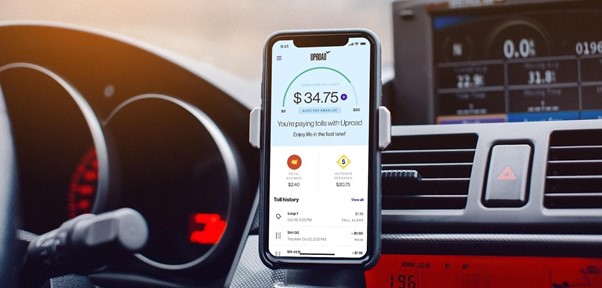Heading back to the office after the COVID-19 lockdown was never going to be easy. We’re all understandably anxious about the risk of contamination in busy shared and public spaces, and this can take a toll on mental health. As organizational psychologist Professor Sir Cary Cooper explains:
“We’re still rightly focused on beating and treating the virus, but there will come a time when we need to address people’s legitimate anxieties around leaving the home, being in public space and going back into work. People will have genuine concerns around issues such as hygiene and contamination.
“Workplaces in particular will need to do a lot of planning to minimize anxiety around returning to work.”
Providing workers with personal protective equipment, such as face masks, disposable medical-grade gloves, and other protective garments, is one step to protect workers’ safety. However, that is only one aspect of a comprehensive COVID-19 plan. Ideally, every workplace COVID-19 plan should include controls to prevent the spread of the virus, such as facilities and equipment, screening, and workplace safety policies, among others.
Enter the SafeKey. This innovative new gadget is designed to make it easier for the individual to navigate a safe return to work (and public life), while collectively making workplaces safer for everyone. In essence, the SafeKey makes it easy for individuals to open doors, press elevator buttons and even open drinks bottles without the need to touch surfaces with their hands.
It’s a multitool created by the cloud-based manufacturing company Fractory, who are based in the UK city of Manchester. The SafeKey is made on Fractory’s state-of-the-art laser cutting platform, drawing on the expertise of the 15 highly experienced engineers who work at the rapidly growing start-up.
Fractory CEO Martin Vares explains how the idea for the game-changing gadget came about:
“We wanted to ensure the safety of the people in our own company which resulted in this idea. While there were similar products on offer, we created ours from brass, which is known for its anti-microbial properties and added a few more functionalities to SafeKey.
“As it proved really popular among our team and their families, we decided to bring it to the public.”
How SafeKey works
The first and most crucial thing to know about the SafeKey is that it’s made from antimicrobial brass. Brass containing at least 58% copper has been proven by multiple studies to kill COVID-19 and other bacteria more quickly than other materials. While bacteria last a few days on plastic or steel, they die within just a few hours on the right grade of brass. The SafeKey comfortably exceeds this 58% benchmark, as it is made from CZ108 grade brass with 64%.
The multitool is designed to be very simple to use. It’s compact, discreet and easily attached to a belt or bag using an extendable cord. When the user needs to open a door, tap in their PIN at an ATM or press an elevator button, they can pull out the SafeKey on the cord and use that instead of their hand. This reduces the need for constant hand washing and disinfecting, as well as limiting the spread of bacteria on shared surfaces.
There will be many challenges ahead in establishing a ‘new normal’ in post-COVID workplaces and public spaces, but gadgets like this one can hopefully remove at least a few of the main anxiety ‘trigger points’.
Other cool covid-inspired innovations
The coronavirus pandemic has inspired a rush of innovation as people seek to quickly resolve new problems. Some are high-tech, some low, but all share the common characteristic of being the result of rapid innovation.
Face shields
You’ve probably seen them already. If you’ve been in a store or restaurant, you’ve definitely seen them. They look live visors but cover the whole face. What’s so innovative about that? Well, had you ever seen one before March 2020? No, probably not. So how did they become so ubiquitous?
The answer lies with a company called Stratasys, who set themselves a target of 3D printing 5,000 units by March 27th, just as the pandemic was hitting. They first provided masks to medical workers, but have since made their design available so anyone can print them from anywhere.
Retooling
What do Nike, Tesla and Scottish craft beer brand Brewdog have in common? They’ve all repurposed their manufacturing capabilities to help out in the fight against Coronavirus. Nike switched to producing masks, Tesla built ventilators and Brewdog produced hand sanitizer.
Drone disinfectants
Drones aren’t designed to fly indoors. They use GPS to calculate where to go but that’s too broad for confined spaces. But when demand for the ability to disinfect indoor spaces without actually being in them became apparent, drones were viewed as the perfect candidate for the job, if only they could fly indoors.
By switching from GPS to AI sensors for navigation, scientists were able to get drones to fly safely in confined spaces in order to disinfect surfaces to make them safe.
Autonomous delivery
Many of us became reliant on home delivery for essentials, but there was still a risk of infection to both recipients and delivery drivers, as deliveries involved human contact. Chinese online retailer JD.com solved this issue in Wuhan by providing automated ‘last mile’ delivery of food, medicine and essentials. The autonomous delivery robots got more than 100,000,000 masks to citizens within 3 days.
Constant temperature monitoring
One of the first and most important Coronavirus symptoms is a high temperature. But taking a person’s temperature involves some degree of contact. During a pandemic this increases risk of infection. Thermometer manufacturer Cooper Atkins solved this problem with TempTrak wifi hardware and wearables. They designed software to convert certain wearable devices into thermometers that constantly monitored temperatures and alerted the wearer and their clinicians if the temperature went over a certain threshold.
Hands-free shopping (in real life)
Not everyone can access online shopping and not everything is available online. Plus, if all retail went online it would cause a collapse in downtown and high street areas. So it needs to be protected. But during a pandemic, any trip to a store is a risk. The makers of Grabandgo software solved this with AI. Using their tech a shopper can enter a store, load their cart and walk out without the cops being called. As they shop, Grabango creates a virtual basket that matches their actual shopping cart. It then bills them via the app once they leave the store. There’s zero scope for theft and zero need for a cashier to touch and bag the groceries.
Image Source: BigStock.com (Licensed)
Related Categories: Health, Reviews








